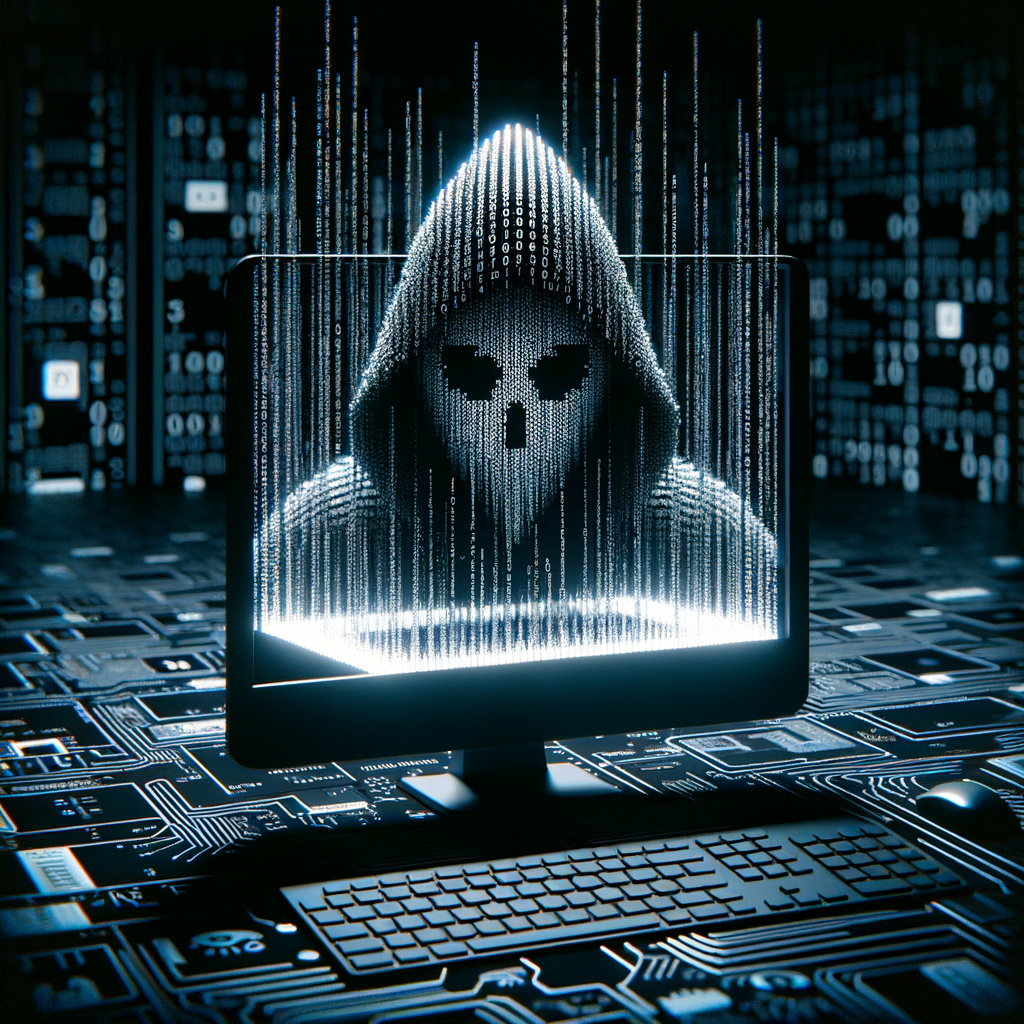 Piergiorgio Venuti
Piergiorgio Venuti
Zero Click Malware: The Invisible Digital Threat – How to Recognize and Defend Yourself
Estimated reading time: 6 minutes
What is Zero Click Malware
Zero click malware, also known as non-click malware or in-memory malware, is a new type of malware that can infect a device without the user taking any action.
Unlike traditional malware that requires the user to click on a link or open an infected attachment, zero click malware is able to install itself on the victim’s device completely silently and invisibly, without any interaction on their part.
How Zero Click Malware Works
This type of malware exploits various vulnerabilities in software and operating systems to gain access to the device. Some common infection vectors include:
- Zero-day vulnerabilities not yet patched
- Bugs in web browsers and messaging apps
- Packet sniffers that intercept network traffic
- Insecure public WiFi networks
- Websites compromised with drive-by exploits
Once initial access is gained, zero click malware uses advanced techniques to keep itself hidden and avoid detection. It can disable antivirus software, hide in RAM memory, encrypt communications, and much more.
Why Zero Click Malware is Dangerous
The completely stealth nature of this malware makes it extremely insidious and difficult to identify. Even the most security-conscious users can be infected without knowing it.
This allows hackers to:
- Monitor all activities performed on the infected endpoint
- Collect sensitive data such as credentials, personal information, browser history
- Collect sensitive data such as credentials, personal information, browser history
- Move laterally within the network to infect other systems
- Use the device for ransomware or denial of service attacks
Furthermore, since no clicks or actions are required, zero click malware can spread very quickly, affecting a large number of victims.
Case Studies and Technical Analysis

Some real-world cases have recently emerged that illustrate the capabilities of this new category of cyber threats.
One of the first zero click exploits to gain attention was Pegasus, developed by cybersecurity firm NSO Group. Used by some governments to spy on journalists and activists, Pegasus exploits zero-day vulnerabilities in iOS and Android to install itself without any user interaction.
Another famous case is ForcedEntry, used to hack the iPhones of several employees in Bahrain. ForcedEntry exploits a vulnerability in iMessage to install spyware without clicking on Apple devices.
These and other cases demonstrate the severity of the threat and the need for advanced protection solutions capable of detecting and preventing zero-click attacks.
How to Detect and Prevent Zero Click Attacks
Since this type of threat leaves no visible traces, identifying and stopping them requires targeted strategies:
- Patching and updates – Always apply the latest security updates to fix known vulnerabilities
- EDR Solutions – Endpoint detection and response technologies that analyze memory-based threats and anomalous behavior
- Advanced web protection – Secure web gateways capable of inspecting all traffic entering and leaving the network
- Network Segmentation – Limit the ability of malware to move laterally by isolating and segmenting critical systems
- Strong Authentication – Enable multi-factor authentication to prevent targeted phishing attacks that often precede zero-clicks
- Awareness Training – Instruct users to recognize and report suspicious activity that may indicate an infection
A layered approach that integrates multiple technologies and policies is essential to defend against this ever-evolving threat.
Increase Prevention with Deception Solutions
One of the most effective strategies against zero-click malware is the use of deception solutions. These solutions create a seemingly attractive environment for malware, but in reality they are traps that detect and isolate threats before they can cause damage. By taking a multi-stage approach to defense, you can dynamically respond to threats as they evolve, defeating attackers with their own techniques.
Continuous Testing and Threat Simulations
Attack simulations and continuous testing of security controls are another key pillar in zero-click malware defense. Services like Posture Guard help organizations verify their security posture by leveraging a vast database of threats, including malware, ransomware, and Advanced Persistent Threats (APTs). These tests help you evaluate the effectiveness of your security tools and optimize your threat prevention and detection capabilities.
Cyber Threat Hunting and Threat Intelligence
Cyber Threat Hunting is crucial to proactively identify threats and sensitive information that may have been compromised. Having a team of experts dedicated to this activity allows you to quickly recover stolen information and organize a more targeted defense. Combined with continuous vulnerability analysis and incident response, this strategy offers significantly improved protection against zero-click attacks.
User training and awareness
While zero-click malware does not require user interaction for infection, a well-informed and aware workforce can still play a crucial role in preventing other types of cyber attacks. Training users on good cybersecurity practices can reduce the risk of malware infections and increase overall security.
Adopt a Dynamic Approach to Security
Taking a dynamic approach to security is essential. Solutions like Active Defense Deception work to respond to attacks during the initial stages, using dynamic techniques to prevent attacks from reaching execution and more advanced stages. This type of proactive defense can deter attackers and make the environment less attractive for malware.
Forecasts and Future Developments
Experts predict that zero-click malware attacks will become one of the most used techniques by hackers in the years to come. As user awareness of malware and phishing grows, cybercriminals will look for new invisible vectors to deliver malicious payloads.
Additionally, the continued rise of IoT devices and smart home technologies presents attackers with an ever-increasing number of potential weak and unpatched targets. Operating environments such as 5G and edge computing could also facilitate the spread of zero-click threats.
To counter these trends, companies and security vendors will need to invest more in threat intelligence, bug bounties, sandboxing and machine learning-based threat detection techniques. Only in this way will it be possible to unmask the rapidly evolving zero-click attacks in no time.
Conclusions
Clickless malware is emerging as one of the most stealthy and dangerous tactics of modern hackers. Its ability to bypass any human interaction to infect entire systems represents a critical challenge for the world of cybersecurity.
To protect individuals and companies from this threat, it is essential to adopt preventive measures at multiple levels, from patching to network monitoring to training. Only by combining awareness and advanced technological solutions will it be possible to combat the phenomenon of zero-click attacks and maintain data integrity and security in the future.
Useful links:
Customers
Twitter FEED
Recent activity
-
SecureOnlineDesktop
Estimated reading time: 6 minutes L'impatto crescente delle minacce informatiche, su sistemi operativi privati op… https://t.co/FimxTS4o9G
-
SecureOnlineDesktop
Estimated reading time: 6 minutes The growing impact of cyber threats, on private or corporate operating systems… https://t.co/y6G6RYA9n1
-
SecureOnlineDesktop
Tempo di lettura stimato: 6 minuti Today we are talking about the CTI update of our services. Data security is… https://t.co/YAZkn7iFqa
-
SecureOnlineDesktop
Estimated reading time: 6 minutes Il tema della sicurezza delle informazioni è di grande attualità in questo peri… https://t.co/tfve5Kzr09
-
SecureOnlineDesktop
Estimated reading time: 6 minutes The issue of information security is very topical in this historical period ch… https://t.co/TP8gvdRcrF
Newsletter
{subscription_form_1}© 2024 Cyberfero s.r.l. All Rights Reserved. Sede Legale: via Statuto 3 - 42121 Reggio Emilia (RE) – PEC [email protected] Cod. fiscale e P.IVA 03058120357 – R.E.A. 356650 Informativa Privacy - Certificazioni ISO












